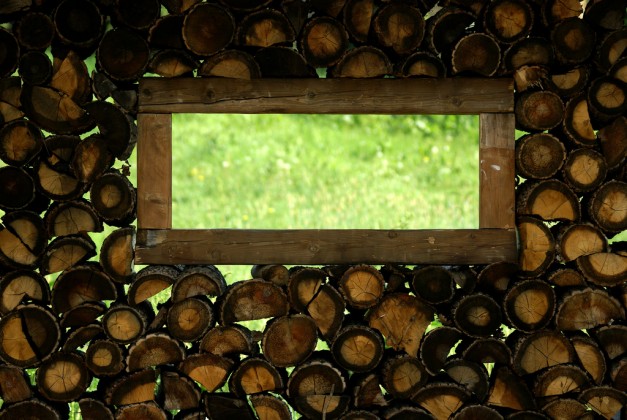Category: Articles, Peer-Reviewed
-
Sustainable Infrastructures and The Future of Writing Studies
citation Ball, Cheryl E. (2015). Sustainable infrastructures and the future of writing studies. WPA: Writing Program Administration, 39(1), 122–137. abstract Given as one of the plenaries at the Council for Writing Program Administration conference in 2015, this revised-for-print article weaves a tale about the good and bad sustainability practices in technical infrastructures within rhetoric and…
-
“Building a scholarly multimedia publishing infrastructure”
citation Ball, Cheryl E. (2017). Building a scholarly multimedia publishing infrastructure. Journal of Scholarly Publishing, 48(2), 99–115. abstract This article provides a preview of Vega, a new scholarly publishing platform in development (set to be released in late 2017). With twenty-plus years of experience publishing scholarly multimedia in the journal Kairos, the author summarizes editorial…
-
“Designed Research: Publishing Designs as Scholarship”
citation: Ball, Cheryl E. (2014/forthcoming). Designed research: Publishing designs as scholarship. Proceedings for Design Research Society conference, Umeå, Sweden. abstract: Scholarly publications are a primary means for researchers in any field to foster and support a shared discourse. As design researchers debate what forms their scholarship might take, this author suggests looking to examples from…
-

“Multimodality as a Frame for Individual and Institutional Change”
citation Arola, Kristin; Sheppard, Jennifer, & Ball, Cheryl E. (2014, Jan. 10). Multimodality as a frame for individual and institutional change. Hybrid Pedagogy. Retrieved from http://www.hybridpedagogy.com/journal/multimodality-frame-individual-institutional-change/ abstract This article provides some historical, institutional, and theoretical context for a multimodal pedagogy, as taught by the three authors in three different universities, which forms the basis for…
-

“Multimodal Revision Techniques in Webtexts”
citation Ball, Cheryl E. (2013). Multimodal revision techniques in webtexts. Classroom Discourse [special issue: Multimodality]. abstract This article examines how an online, scholarly journal, Kairos: Rhetoric, Technology, Pedagogy mentors authors to revise their webtexts (interactive, digital media scholarship) for publication. Using an editorial pedagogy, in which multimodal and rhetorical genre theories are merged with revision…
-
"Adapting Editorial Peer Review of Webtexts for Classroom Use"
citation Ball, Cheryl E. (2013). Adapting editorial peer review of webtexts for classroom use. Writing & Pedagogy. Firewalled at http://www.equinoxjournals.com/WAP/index abstract This article picks up, literally, where another one leaves off: “Assessing Scholarly Multimedia: A Rhetorical Genre-Studies Approach” in Technical Communication Quarterly (Ball, 2012). In that article, I describe how I have brought my editorial-mentoring…
-
"Assessing Scholarly Multimedia"
citation Ball, Cheryl E. (2012) Assessing scholarly multimedia: A rhetorical genre studies approach. Technical Communication Quarterly, 21(1). abstract This article describes what scholarly multimedia (i.e., webtexts) are and how one teacher-editor has students compose these texts as part of an assignment sequence in her writing classes. The article shows how one set of assessment criteria…
-
"Designing Collaborative Learning Spaces"
citation Bemer, Amanda; Moeller, Ryan M.; & Ball, Cheryl E. (2009, September). Designing collaborative learning spaces: Where material culture meets mobile writing processes. Programmatic Perspectives: Journal of the Council for Programs in Technical and Scientific Communication, 1(2). http://www.cptsc.org/pp/vol1-2/bemer_moeller_ball1-2.pdf abstract In May 2007, the Department of English at Utah State University (USU) redesigned its computer lab…
-
"Converging the ASS[umptions] between U and ME"
citation Ball, Cheryl E., & Moeller, Ryan M. (2008). Converging the ASS[umptions] between U and ME; or, How new media can bridge a scholarly/creative split in English studies. Computers and Composition Online [Special issue: Media convergence]. http://www.bgsu.edu/cconline/convergence/ abstract Authors of new media texts regularly draw on both scholarly and creative genres to construct their arguments.…
-
"Reinventing the Possibilities"
citation Ball, Cheryl E., & Moeller, Ryan M. (2007). Reinventing the possibilities: Academic literacy and new media. Fibreculture Journal, 10. http://journal.fibreculture.org/issue10/ball_moeller/index.html abstract This webtext demonstrates the possibilities of using new media to teach students critical literacy skills applicable to the 21st century. It is a manifesto for what we think writing scholars should be teaching…